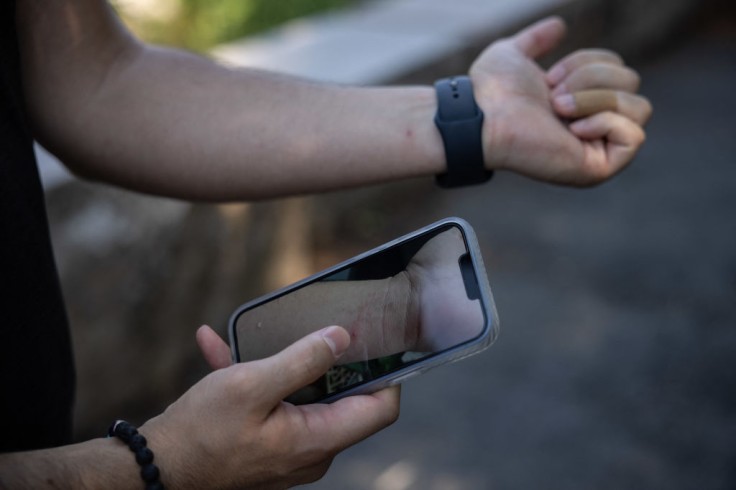
Health experts disclosed on Wednesday the discovery of a new sexually transmitted fungal infection in the United States.
First US Case of Sexually Transmitted Ringworm
According to research circulated in the journal JAMA Dermatology, the first known U.S. case of this novel form of ringworm was identified in a New York City man in his thirties. Following trips to England, Greece, and California, the man returned to develop tinea, a skin rash, on his penis, buttocks, and limbs.
Described as "highly contagious" in a press release from New York University's Langone Health, the new fungal infection may take months to clear even with treatment, as determined by experts from the medical center and beyond.
Characterized by skin rashes, also known as tinea, which can spread to the face, limbs, groin, and feet, this new fungal infection presents challenges in diagnosis due to its resemblance to eczema lesions rather than the typical circular patterns of other ringworm forms.
Health experts diagnosed the New York man with an infection caused by Trichophyton mentagrophytes type VII (TMVII), a sexually transmitted variant of ringworm previously prevalent in Europe. Despite engaging in sexual activity with multiple male partners during his travels, none of them reported similar symptoms.
Dr. Avrom Caplan, lead author of the study and assistant professor of dermatology at NYU's Grossman School of Medicine, highlighted this as "the latest in a group of severe skin infections" reaching the U.S.
Dr. John Zampella, an associate professor of dermatology at the same institution and co-author of the study, urged physicians to inquire about rashes around the groin and buttocks, particularly among sexually active individuals with recent international travel and complaints of itching.
Read Also: Body Lice Possibly Contributed to Rapid Spread of Bacteria in the Bubonic Plague, Study Reveals
Standard Treatments Effective Against Trichophyton Mentagrophytes Type VII
Addressing potential stigma associated with the infection, Caplan emphasized its distinction from mpox, previously declared a global health emergency by the World Health Organization.
Unlike mpox, TMVII has only one reported case in the U.S., with no evidence of widespread occurrence. Although challenging to treat, TMVII appears to respond to standard treatments like terbinafine, an oral antifungal tablet, according to Zampella.
Meanwhile, Caplan cautioned about another less responsive skin infection causing tinea, Trichophyton indotinea, which has been reported globally after originating in India. This variant, unlike TMVII, often resists terbinafine. Researchers urged clinicians to remain vigilant for symptoms of both infections, although current incidence rates remain low in the U.S.
Caplan emphasized the importance of increased awareness among clinicians and encouraged individuals experiencing genital lesions or persistent discomfort to seek medical advice promptly.
Caplan's team at NYU Langone Health has since identified 11 cases of Trichophyton indotineae ringworm in New York City, linked to travel to Asia. These cases have shown resistance to standard treatments, including first-line antifungals.
The report emphasizes the developing public health threat posed by the fungus, as it causes ringworm infections that may be resistant to terbinafine, a main oral antifungal medication.
According to the Mayo Clinic, terbinafine is prescribed for fungal infections of the scalp, body, fingernails, toenails, jock itch, and athlete's foot.
Symptoms of Trichophyton Mentagrophytes Type VII Include:
- Intense itching
- Inflamed circular patterns on the skin
- Hair and nail issues
- Athlete's foot
Related Article: CDC Reveals First Documented Cases of HIV in 3 Women Acquired Through Cosmetic Procedure